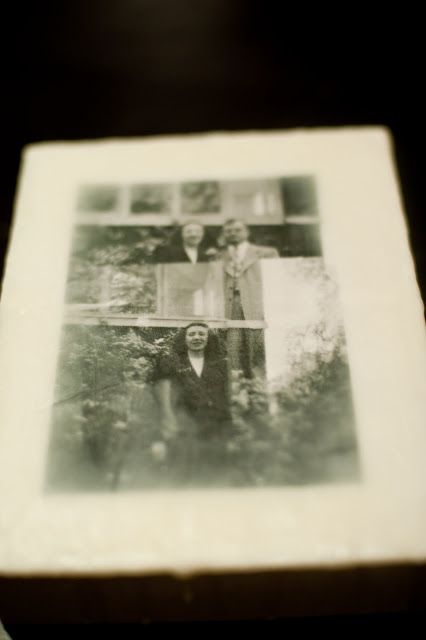I have been having a blast in my encaustic studio learning and experimenting with the process..
Encaustic is an ancient medium of painting with wax. These pieces explore
the application of wax onto photographic images and incorporate them into
unique pieces of art. These encaustic works utilize the tactile quality and
exploratory nature of an ancient artistic medium. The encaustic medium is
flexible and multi-dimensional. Its unique characteristics lend a
transformative, dynamic, spontaneous and experimental approach to
photographic techniques and imagery.
-Susan Joan Schenk
(from The Artist's Handbook by Ralph Mayer )
Encaustic is a beeswax based paint that is kept molten on a heated palette. It is applied to a surface and reheated to fuse the paint into a uniform enamel-like finish. The word encaustic comes from Greek and means to burn in, which refers to the process of fusing the paint. Encaustic has a long history, but it is as versatile as any 20th century medium. It can be polished to a high gloss, it can be modeled, sculpted, textured, and combined with collage materials. It cools immediately, so that there is no drying time, yet it
can always be reworked. The durability of encaustic is due to the fact that beeswax is impervious to moisture. Because of this it will not deteriorate, it will not yellow, and it will not darken. Encaustic paintings do not have to be varnished or protected by glass. Encaustic paint has no toxic fumes, nor does it require the use of solvents. As a
result, a number of health hazards are reduced or eliminated.
The History of Encaustic
Encaustic painting was practiced by Greek artists as far back as the 5th century B. C.. Most of our knowledge of this early use comes from the Roman historian Pliny, who wrote in the 1st century A. D.. Pliny seems to have had very little direct knowledge about studio methods, so his account of techniques and materials is sketchy. According to Pliny, encaustic was used in a variety of applications: the painting of portraits and scenes of mythology on panels, the coloring of marble and terra cotta, and work on ivory
(probably the tinting of incised lines). Wax is an excellent preservative of materials. It was from this use that the art of encaustic painting developed. The Greeks applied coatings of wax and resin to weatherproof their ships. Pigmenting the wax
gave rise to the decorating of warships. Mention is even made by Homer of the painted ships of the Greek warriors who fought at Troy. The use of a rudimentary encaustic was therefore an ancient practice by the 5th century B. C.. It is possible that at about that time the crude paint applied with tar brushes to the ships was refined for the art of painting on panels. Pliny mentions two artists who had in fact started out as ship painters.
The use of encaustic on panels rivaled the use of tempera, in what are the earliest known portable easel paintings. Tempera was a faster, cheaper process. Encaustic was a slow, difficult technique, but the paint could be built up in relief, and the wax gave a rich optical effect to the pigment. These characteristics made the finished work startlingly life-like. Moreover, encaustic had far greater durability than tempera, which was vulnerable to moisture. Pliny refers to encaustic paintings several hundred years old in the possession of Roman aristocrats of his own time. The nature of encaustic to both preserve and color gave it wide use on the stone work of both architecture and statuary. The white marble we see today in the monuments of Greek antiquity was once
colored, probably delicately tinted like the figures on the Alexander sarcophagus in Istanbul. Pliny says that when the sculptor Praxiteles was asked which of his pieces he favored, he answered those "to which [the painter] Nicias had set his hand." Decorative terra cotta work on interiors was also painted with encaustic, a practice that was a forerunner to mosaic trim.












No comments:
Post a Comment